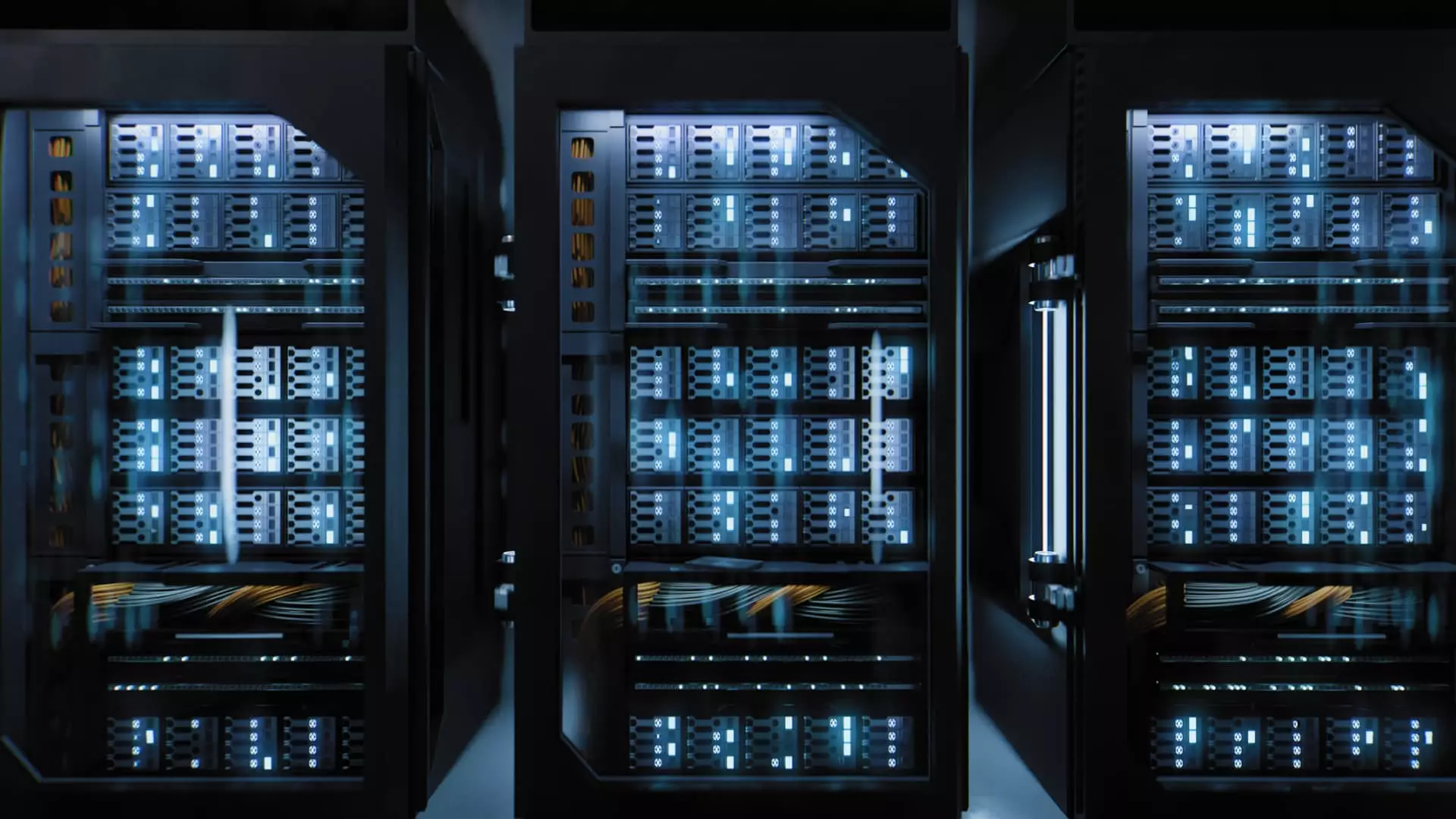The rapid advancement of artificial intelligence (AI) technology has sparked a significant transformation in the operational ethos of data centers across Europe. As organizations race to deploy increasingly powerful chips—especially those manufactured by companies like Nvidia—data centers are encountering unprecedented challenges related to energy consumption and environmental sustainability. These challenges not only threaten the European Union’s ambitious decarbonization goals but also raise fundamental questions about the sustainability of the region’s data infrastructure amidst an impending AI boom.
As pointed out in research conducted by Goldman Sachs, AI has the potential to escalate demand for data centers by an astonishing 160% by 2030. The introduction of high-powered chips, commonly known as graphics processing units (GPUs), is a double-edged sword. While these chips drive exceptional capabilities in AI applications, their energy consumption is immense. For instance, a single square meter in a modern data center utilizing AI technology can draw up to 120 kilowatts of power, which is similar to the energy needs for 15 to 25 typical homes, according to experts like Andrey Korolenko from Nebius.
This burgeoning energy demand is matched by an equally pressing need for effective cooling solutions. GPUs release significant amounts of heat, which necessitates cooling systems adept at managing higher water temperatures. The implications of these developments are profound, as the increased energy requirement threatens the EU’s objective of reducing energy consumption by 11.7% by 2030.
Addressing the heat generated by AI chips adds another layer of complexity to the sustainability equation. Traditionally, many data centers have relied on air cooling methods. However, the shift towards liquid cooling appears to be gaining traction, as it can be more energy-efficient in certain contexts. The downside is that this method often requires lower water temperatures, which some experts caution could lead to a regression towards older, less sustainable operational practices.
Michael Winterson, the chair of the European Data Center Association (EUDCA), has voiced concerns regarding the long-term repercussions of adhering to the demands of chip manufacturers, indicating that lowering water temperatures might compromise sustainability efforts. This represents a critical moment where the push for speed and power in AI development may overshadow the essential commitment to environmental responsibility.
European policymakers are wrestling with these challenges as they design regulations intended to combat climate change. The Energy Efficiency Directive, recently established by the EU, aims to scrutinize and publicly report energy consumption from data centers. This initiative could collide with the needs of AI-driven firms that require extensive computational power.
In this context, energy management firms like Schneider Electric emphasize the importance of engaging with the EU regarding optimal power sourcing for AI data centers. Steven Carlini, a prominent voice at Schneider, has highlighted that cooling represents the second-largest energy consumer in data centers. This reality underscores the significance of strategies that align AI’s power demands with sustainable energy practices.
Equinix’s Ferhan Gunen further elaborates on customer concerns, noting that many organizations are eager to increase server density, which inevitably leads to higher energy consumption. Yet this evolution does not come with a straightforward solution, revealing the complexity of balancing technological advancements with sustainable practices.
Despite these mounting challenges, pathways toward sustainability do exist. Nebius, for example, is actively pushing forward with investments in AI infrastructure while acknowledging the need for efficient energy management. As the AI sector continues to evolve, it is likely that the pursuit of innovative technologies will yield new cooling methods and energy-efficient strategies that can help data centers operate sustainably.
The European data center landscape undeniably faces a challenging paradox: How to accommodate soaring demand for AI while keeping energy consumption and environmental impact in check. The dialogue between chip manufacturers, data center operators, and regulatory bodies will be crucial in mitigating the risks associated with increased energy consumption.
In closing, while the trajectory of artificial intelligence promises to reshape industries, it is imperative that Europe prioritize sustainability in its data center operations. Balancing the demands of AI with the principles of environmental responsibility is not just a regulatory obligation; it is a necessity for ensuring a viable digital future. The ongoing conversations and strategies developed in the next few years will determine whether Europe can lead the way in fostering a sustainable relationship with emerging technologies.


Leave a Reply
You must be logged in to post a comment.